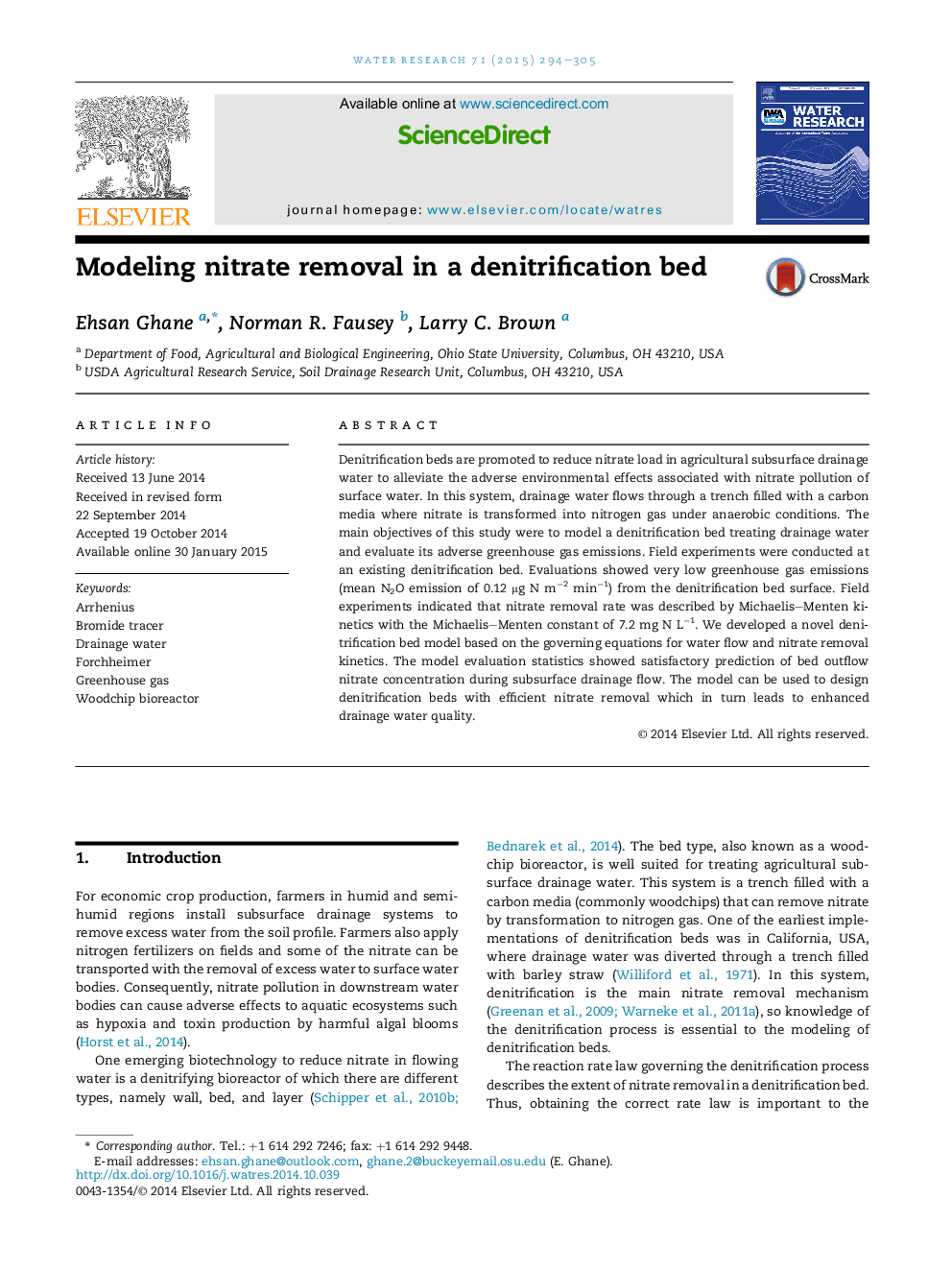| کد مقاله | کد نشریه | سال انتشار | مقاله انگلیسی | نسخه تمام متن |
|---|---|---|---|---|
| 4481187 | 1623097 | 2015 | 12 صفحه PDF | دانلود رایگان |
• Tracer test showed physical retardation of bromide in the denitrification bed.
• Greenhouse gas emissions from the denitrification bed surface were very low.
• Michaelis–Menten kinetics described nitrate removal rate in a denitrification bed.
• A novel denitrification bed model was developed to predict nitrate removal.
Denitrification beds are promoted to reduce nitrate load in agricultural subsurface drainage water to alleviate the adverse environmental effects associated with nitrate pollution of surface water. In this system, drainage water flows through a trench filled with a carbon media where nitrate is transformed into nitrogen gas under anaerobic conditions. The main objectives of this study were to model a denitrification bed treating drainage water and evaluate its adverse greenhouse gas emissions. Field experiments were conducted at an existing denitrification bed. Evaluations showed very low greenhouse gas emissions (mean N2O emission of 0.12 μg N m−2 min−1) from the denitrification bed surface. Field experiments indicated that nitrate removal rate was described by Michaelis–Menten kinetics with the Michaelis–Menten constant of 7.2 mg N L−1. We developed a novel denitrification bed model based on the governing equations for water flow and nitrate removal kinetics. The model evaluation statistics showed satisfactory prediction of bed outflow nitrate concentration during subsurface drainage flow. The model can be used to design denitrification beds with efficient nitrate removal which in turn leads to enhanced drainage water quality.
Figure optionsDownload high-quality image (482 K)Download as PowerPoint slide
Journal: Water Research - Volume 71, 15 March 2015, Pages 294–305
